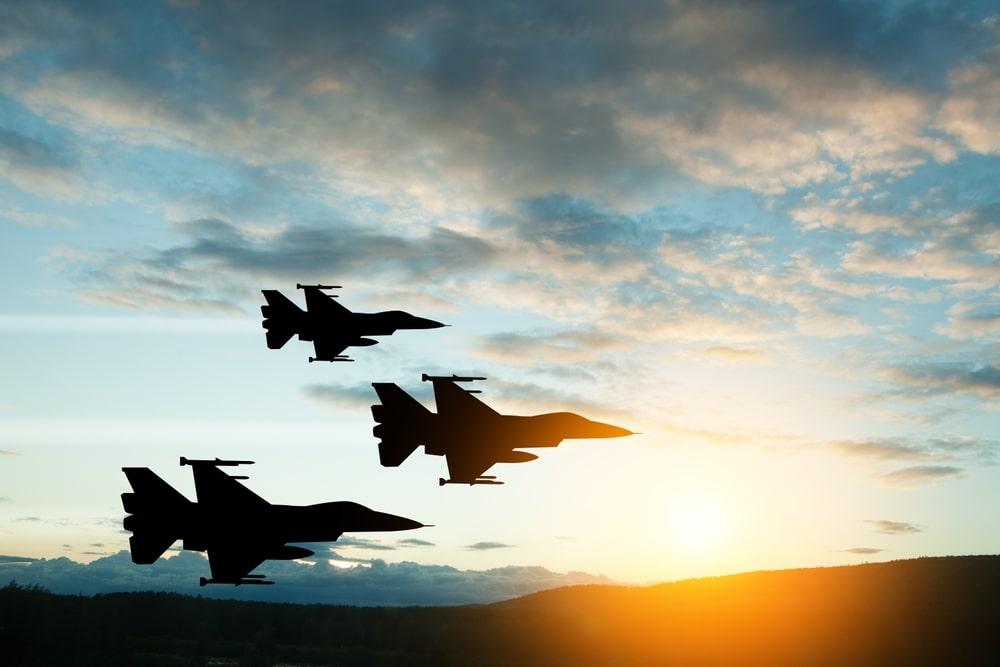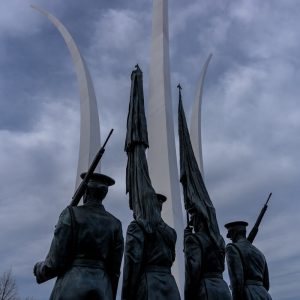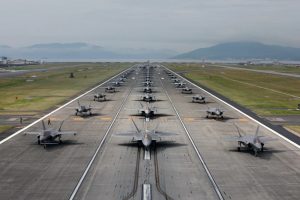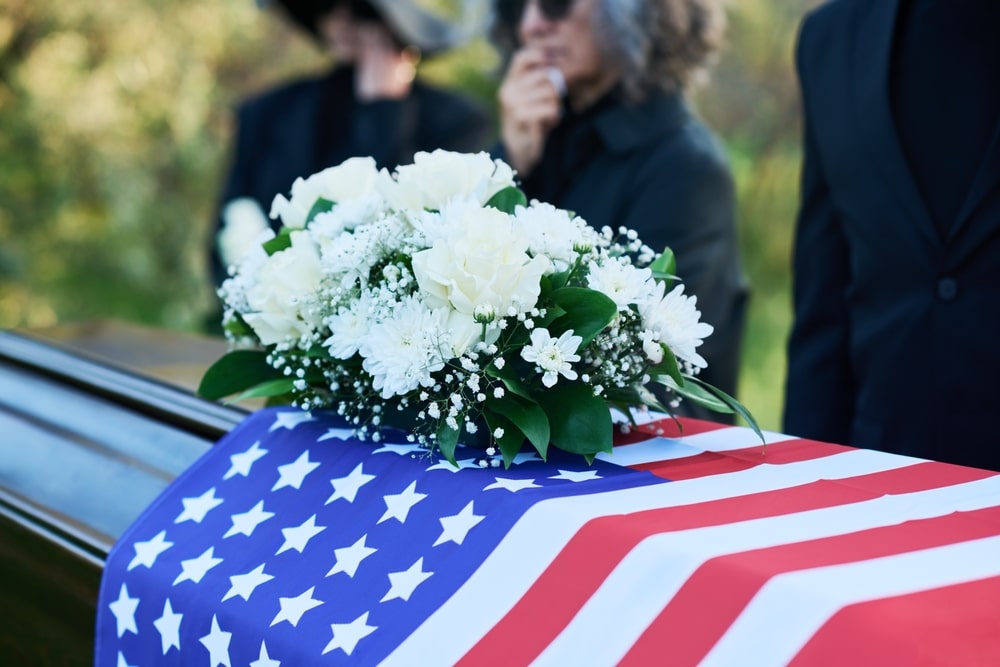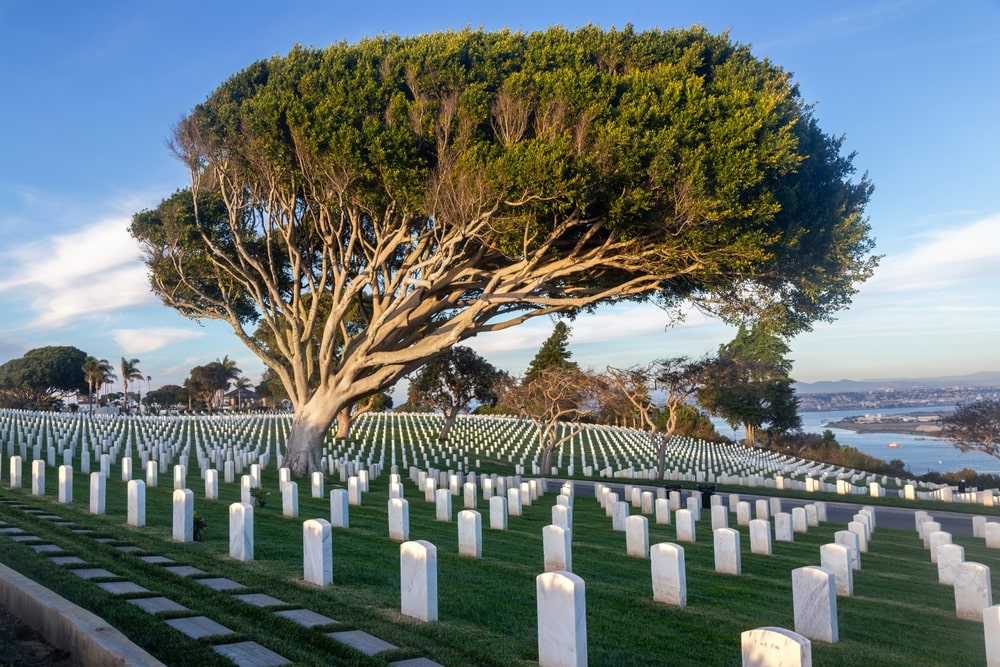“A soldier can walk the battlefields where he once fought, a Marine can walk the beaches he once stormed, but an airman can never visit the patch of sky he raced across on a mission to defend freedom. And so, it’s fitting that, from this day forward, the men and women of the Air Force will have this memorial, a place here on the ground that recognizes their achievements and sacrifices in the skies above.” President George W. Bush
Memorial Day is a day set aside every year to honor and remember the many men and women who have died while serving the United States of America and its people. As we seek to honor them, let us remember them and the great sacrifices they made to preserve life, liberty, and the pursuit of happiness.
Air Force Memorial
Opened in 2066, the Air Force Memorial is an impressive structure with three spires soaring to the sky. The memorial honors both current active-duty Air Force servicemembers as well as airmen and women killed in action. Strategically located at a promontory point, the monument overlooks Arlington National Cemetery, the Pentagon, the Potomac River, and the Washington, D.C. skyline.
The memorial stands at 402 feet (123 meters) high, and the tallest of the three spires is 270 feet (82 meters). The memorial is flanked by two granite walls, each highlighting inscriptions based on the three core values of the Air Force: “Integrity First, Service Before Self, and Excellence in All We Do.” The Air Force Memorial receives hundreds of thousands of visitors every year and is a visually stunning tribute to aviation and the United States Air Force.
How It Came to Be
In the 1990s, the Air Force Association (AFA) and the Air Force Sergeants’ Association (AFSA) began efforts to create a memorial honoring the Air Force. In 1992, Oliver “Ollie” Crawford – a WWII U.S. Army Air Corps veteran – established the Air Force Memorial Foundation with the intent to raise funds to construct an Air Force memorial.
In 1993, legislation passed authorizing the creation of an Air Force memorial. With that approval, the Air Force Memorial Foundation worked closely with the National Park Service to survey 18 possible sites. After much contemplation, the Air Force Memorial Foundation selected three acres at the memorial’s current location. The groundbreaking ceremony was held on September 15, 2004. The event was attended by dozens of renowned military aviators and featured a flyover of both vintage and modern aircraft.
The Unique Design and Its Meaning
As with any memorial, the creators approached the design with intentionality and purpose. The Air Force Memorial Foundation selected architect James Ingo Freed to design the memorial. Freed’s previous designs include the United States Holocaust Memorial Museum and the Ronald Reagan Building and International Trade Center.
Curving Spires “Soaring to Glory”
Perhaps the most striking feature of the memorial is its centerpiece – three stainless steel and concrete spires that rise more than 200 feet (61 meters) in the air. Collectively called “Soaring to Glory,” the spires are visible for miles and evoke the Air Force’s three core values. Additionally, each spire represents different members of the Air Force – active, guard, and reserve. According to James Freed, the memorial’s “array of arcs against the sky evokes a modern image of flight by jet and space vehicles. At the same time, it enshrines the past in permanent resemblance of the pioneers of flight who came before and pays homage to the future.”
Air Force Honor Guard Sculpture
Another signature feature of the memorial is the Air Force Honor Guard sculpture. The bronze image depicts four figures dressed in precisely replicated USAF Honor Guard clothing. The sculptor paid meticulous attention to every detail, from the crossing of the shoelaces to every aspect of the clothing. Two of the figures are flag bearers (holding the U.S. flag and the Air Force ceremonial flag). The other two figures are weapons bearers. When speaking about his vision for the sculpture, artist Zenos Frudakis says that the figures “came into view as unique people, with faces and bodies infused with life, inspiring connections to the real people who serve and sacrifice. They reflect the diversity of gender and race that strengthens the Air Force and the nation.”
Other Notable Features
While the spires and the Honor Guard sculpture are the focal points of the memorial, other notable elements were included. The Parade Ground (walkway) leads visitors to two granite walls. Each wall is engraved, including Medal of Honor recipients and quotes relating to the USAF’s three core values. Additionally, there is a glass wall that honors missing Air Force members. Each element invites visitors to reflect on the courage, sacrifice, and dedication of the Air Force.
Why Do We Have Memorials?
Permanent memorials ensure a lasting tribute for those who have been loved and lost. They also allow us, as people, to honor those we wish to always remember. Just as we create memorials for our heroes, we also create them for our loved ones. There are five key reasons why permanent memorials are important, whether it is to commemorate an event, a group of people, or just one person, like a close loved one.
- A permanent memorial provides a place for people to mourn.
- It gives all mourners (not just family) access to pay their respects and connect with those who have died.
- It provides a permanent place that will exist for generations to come.
- It allows people the opportunity to remember and reflect on the lives lived.
- It ensures that the dead are remembered and respected.
For many of our veterans, a large-scale memorial honors the group as a whole. This is the case with Air Force servicemembers and the Air Force Memorial. However, for individuals, families set headstones, grave markers, or inscriptions in place. Both types of memorialization are important and honoring to our veterans and our loved ones.
Want to Get Involved?
There are many ways to support the United States Air Force, its members, and their families. If you are interested, consider looking into the following charitable organizations to see if one appeals to you:
Airmen Memorial Foundation
Folds of Honor
Air Force Aid Society
Air Force Assistance Fund

